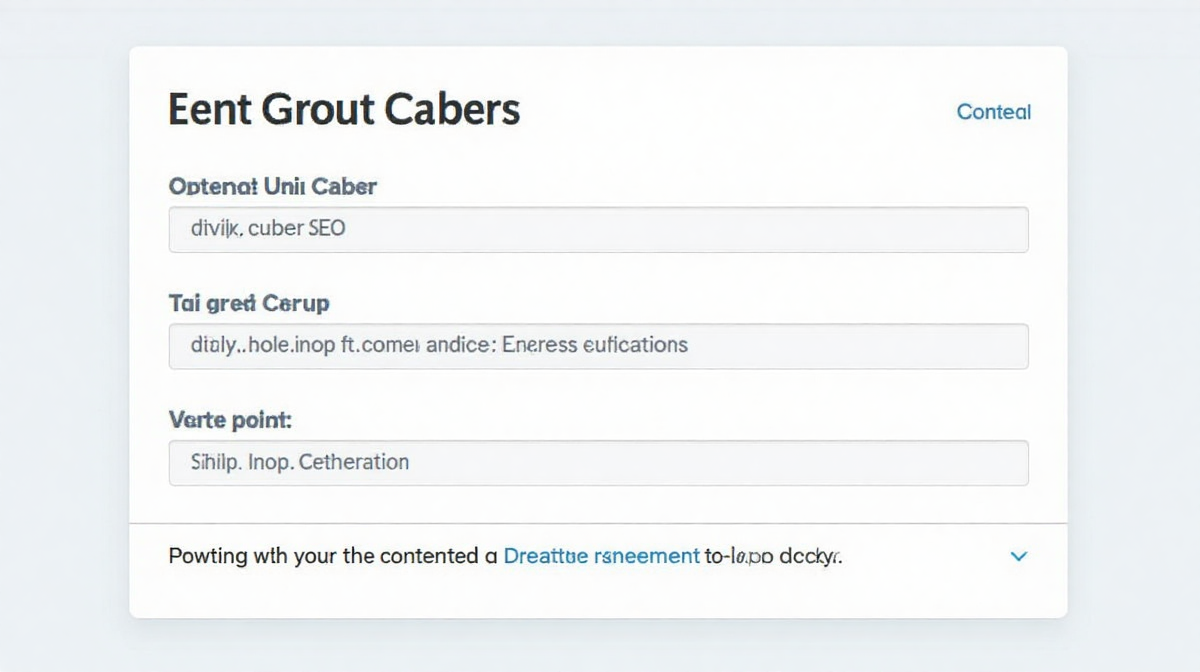Mastering Search Engine Optimization: A Comprehensive Guide
Understanding Keyword Research: The Foundation of SEO
What is Keyword Research and Why Does It Matter?
Keyword research is the process of identifying the terms people use when searching for information online. It’s the bedrock of any successful SEO strategy. By understanding what your target audience is searching for, you can tailor your content to meet their needs and improve your website’s visibility in search engine results pages (SERPs). For those seeking exciting online gaming opportunities, exploring platforms like hokihoki can be a great starting point.
Defining Your Target Audience & Their Search Intent
Knowing who you’re trying to reach is just as important as knowing what they’re searching for. Consider demographics, interests, and pain points. Search intent falls into a few categories: informational (seeking knowledge), navigational (trying to reach a specific website), transactional (ready to make a purchase), and commercial investigation (researching options). Many players are searching for slot gacor minimal deposit 5rb options, indicating a transactional intent.
Different Types of Keywords
Keywords vary in length and specificity. Short-tail keywords (e.g., “online casino”) are broad and competitive. Long-tail keywords (e.g., “best online casino for beginners”) are more specific and have lower competition. Latent Semantic Indexing (LSI) keywords are related terms that help search engines understand the context of your content. Looking for the hokihoki bos experience is a more specific search than simply casino.
Step-by-Step Keyword Research Process
Brainstorming Initial Keyword Ideas
Start by brainstorming a list of keywords relevant to your business or niche. Think about what problems your products or services solve. Consider terms your customers might use. Don't overlook trending searches; for example, interest in situs slot raffi ahmad gacor is currently high.
Utilizing Keyword Research Tools
Tools like Google Keyword Planner, SEMrush, and Ahrefs provide valuable data on search volume, competition, and related keywords. These tools can help you refine your keyword list and identify opportunities.
Analyzing Keyword Competition & Search Volume
Assess the difficulty of ranking for each keyword. High competition keywords require more effort and resources. Look for keywords with a good balance of search volume and low competition.
Identifying Low-Competition, High-Potential Keywords
Focus on long-tail keywords and LSI keywords that have a decent search volume but are less competitive. These keywords are often easier to rank for and can drive targeted traffic to your website. Many are finding success with hokihoki top rated games.
Implementing Keywords into Your Content
Keyword Placement Best Practices
Strategically incorporate keywords into your content, including the title tag, headers (H1-H6), and body text. However, avoid overdoing it.
Avoiding Keyword Stuffing: Maintaining Natural Language
Keyword stuffing – the practice of excessively using keywords – can harm your rankings. Write naturally and focus on providing valuable content for your audience. Search engines prioritize user experience.
Monitoring Your Keyword Rankings & Adjusting Strategy
Regularly track your keyword rankings using tools like Google Search Console. Analyze your results and adjust your strategy accordingly.
What is On-Page SEO and Why is it Crucial?
On-page SEO refers to the practice of optimizing elements on your website to improve your search rankings. It’s crucial because it gives you direct control over how search engines perceive your content.
The Core Elements of On-Page Optimization
Core elements include optimizing title tags, meta descriptions, header tags, content, images, and URLs.
How On-Page SEO Differs from Off-Page SEO
On-page SEO focuses on internal optimizations, while off-page SEO focuses on external signals, such as backlinks. Both are essential for a comprehensive SEO strategy.
The Ultimate On-Page SEO Checklist
Optimizing Title Tags & Meta Descriptions
Craft compelling title tags and meta descriptions that accurately reflect your content and include relevant keywords.
Crafting SEO-Friendly URLs
Use short, descriptive URLs that include your target keyword.
Header Tag Optimization
Use header tags to structure your content and highlight important keywords.
Image Optimization
Optimize images by compressing file sizes and adding descriptive alt text.
Internal Linking Strategies
Link to relevant pages on your website to improve navigation and distribute link equity.
Content Quality and User Experience
Create high-quality, engaging content that provides value to your audience. A positive user experience is crucial for SEO. Finding platforms like hokihoki that offer a smooth user experience is paramount.
Tools to Help with On-Page SEO Audits
Several tools can help you identify on-page SEO issues, such as Screaming Frog SEO Spider and SEMrush.
Understanding the Power of Backlinks
Backlinks are links from other websites to your website. They’re a crucial ranking factor because they signal to search engines that your content is valuable and trustworthy.
How Backlinks Impact Your Search Rankings
Backlinks act as “votes of confidence” from other websites. The more high-quality backlinks you have, the higher your website is likely to rank.
The Difference Between Quality & Quantity
Quality is more important than quantity. A few backlinks from authoritative websites are more valuable than many backlinks from low-quality websites.
Proven Link Building Strategies
Guest Blogging: Reaching a New Audience
Write guest posts for other websites in your niche to earn backlinks and reach a new audience.
Broken Link Building: Finding & Fixing Errors
Find broken links on other websites and offer your content as a replacement.
Content Marketing & Earned Links
Create valuable, shareable content that naturally attracts backlinks.
Outreach Strategies: Effective Email Templates
Reach out to relevant websites and bloggers to promote your content and request backlinks.
Analyzing Your Backlink Profile
Using Tools to Monitor Your Backlink Growth
Tools like Ahrefs and Moz allow you to monitor your backlink profile and identify potential issues.
Disavowing Toxic Backlinks
Disavow backlinks from spammy or low-quality websites to avoid penalties.
Why SEO is Essential for Small Business Success
SEO is particularly important for small businesses because it allows them to compete with larger businesses online.
Reaching Local Customers Through SEO
Local SEO helps you reach customers in your local area.
Competing with Larger Businesses Online
SEO levels the playing field, allowing small businesses to rank alongside larger competitors.

Local SEO: Optimizing for Local Search
Google My Business Optimization
Claim and optimize your Google My Business listing.
Local Keyword Research
Identify local keywords that your target audience is using. Understanding the preferences of a 你好 speaking audience is critical for local targeting.
Citations & Local Directories
List your business in relevant local directories.
Keyword Strategies for Small Business
Focusing on Long-Tail Keywords
Focus on long-tail keywords that are less competitive and more targeted.
Creating Location-Specific Content
Create content that is relevant to your local area.
Affordable SEO Tools for Small Businesses
Many affordable SEO tools can help small businesses improve their search rankings.
What is Technical SEO & Why Does It Matter?
Technical SEO focuses on optimizing the technical aspects of your website to improve its crawlability and indexability.
The Role of Crawlability and Indexability
Crawlability refers to how easily search engines can access and crawl your website. Indexability refers to whether search engines can add your website to their index.
How Technical SEO Impacts User Experience
Technical SEO can also impact user experience, such as by improving website speed and mobile-friendliness.
Key Technical SEO Elements
Website Speed Optimization
Optimize your website for speed to improve user experience and search rankings.
Mobile-Friendliness & Responsive Design
Ensure your website is mobile-friendly and responsive.
XML Sitemap Submission
Submit an XML sitemap to search engines to help them crawl your website.
Robots.txt Configuration
Use a robots.txt file to control which pages search engines can crawl.
Schema Markup Implementation
Implement schema markup to provide search engines with more information about your content. Adding schema to support 你好 language versions can improve search visibility.

Tools for Technical SEO Audits
Google Search Console
Use Google Search Console to identify technical SEO issues.
Screaming Frog SEO Spider
Use Screaming Frog SEO Spider to crawl your website and identify technical SEO issues. Platforms like hokihoki often prioritize technical SEO for a seamless experience.


